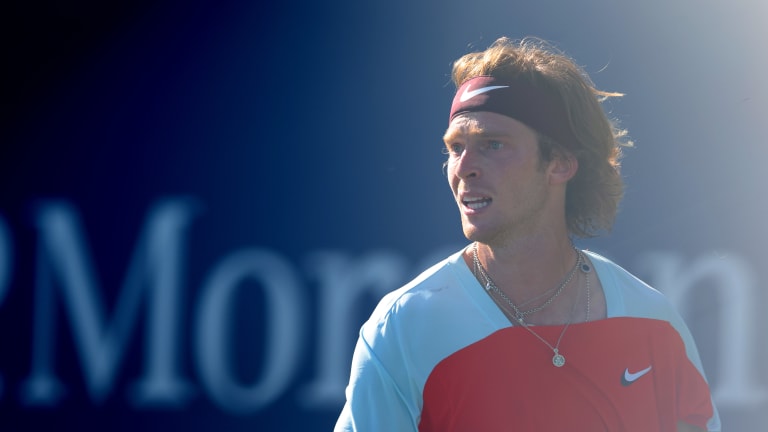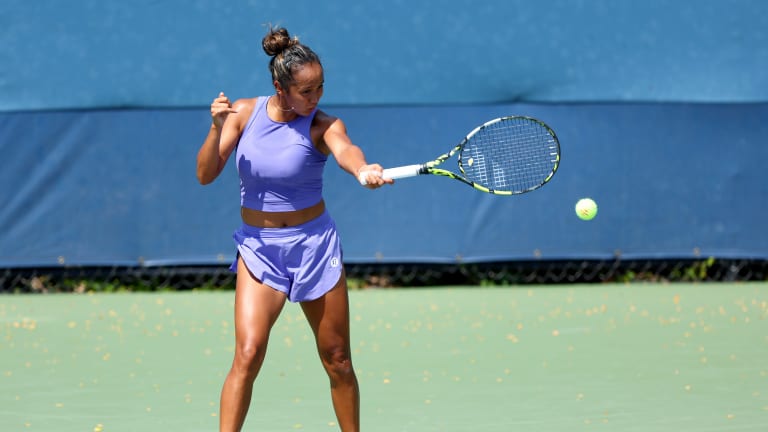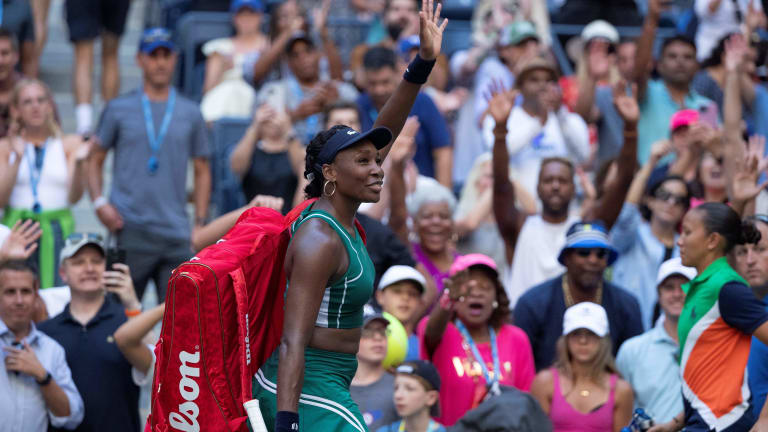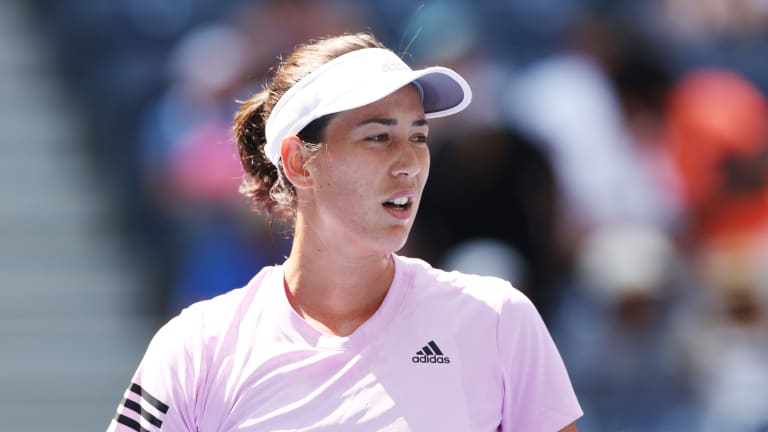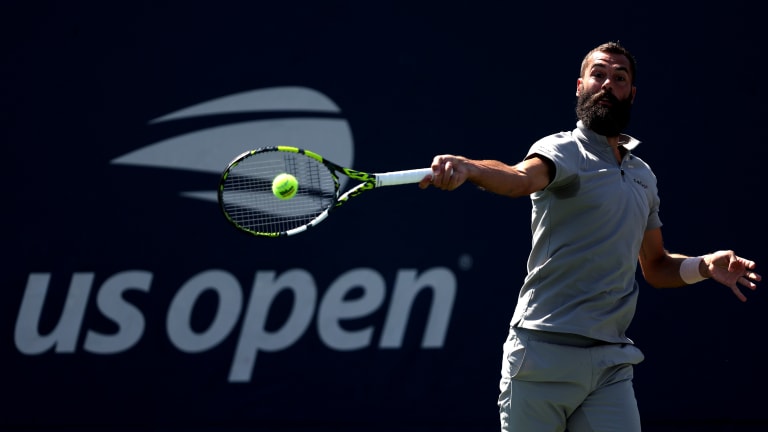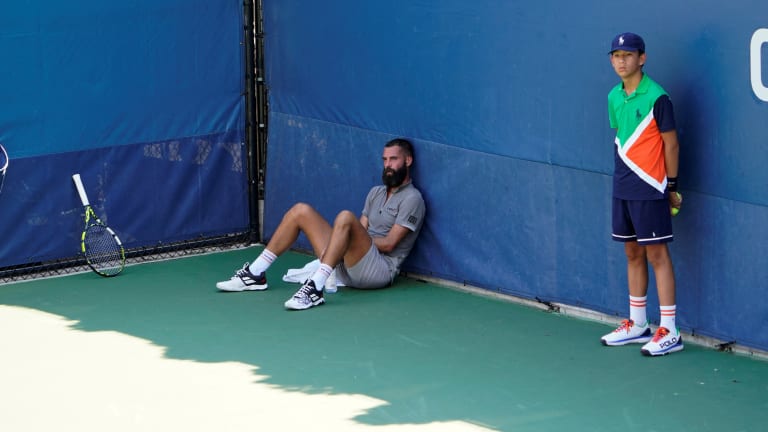A Moment of Practice with ’21 Finalist Fernandez
NEW YORK—It’s 5:57 p.m. on Tuesday night at the US Open. To the west of Arthur Ashe Stadium are five practice courts. Starting at sunrise, these courts are packed, crackling with the sounds of one ball after another, players, coaches, parents and others shuttling in and out like some kind of racquet-filled airline terminal.
But at this moment, the only player on any of those courts is Leylah Fernandez. Runner-up here a year ago, currently ranked 14th, Fernandez at this moment is gently kicking a soccer ball across the width of Court P1. She’s on the north side of the court.
Tap and move. Tap and move. Tap and move. On and on.
Now, Fernandez moves further east to Court P2, then back all the way to the western sideline of P1.
Tan and move. Tap and move. Tap and move.
It is all so gentle, akin to a child in a field on a Sunday morning.
At the south end, in the bleachers, approximately 200 fans have just about filled the section behind P2. In contrast to the subdued qualities of Fernandez tapping a soccer ball by herself, what they’d previously witnessed was Fernandez in full practice mode. Forehand. Backhand. Forehand. Backhand. In this case, the drill called for lacing each shot down the line—early, hard, deep. Again and again and again. Think back to the likes of other lefties who made a mark here, Jimmy Connors and Monica Seles.
Earlier this year, Fernandez reached the quarterfinals of Roland Garros. But after that, a foot injury kept her off the tour for two months and just two matches since her return in August.
Yesterday she kicked off her US Open with a 6-3, 6-4 win over 98th-ranked Oceane Dodin. Tomorrow, no earlier than 5:00 p.m. on the Grandstand, Fernandez will play world No. 35, Luidmila Samsonova.
But if you watched Fernandez’s practice session this evening, you would have seen how neither last year’s run to the finals, nor yesterday’s win, nor tomorrow’s opponent, had anything to do with what she was doing in those minutes when day makes its towards night. Different as the drills appeared, soccer ball and tennis ball shared one of Fernandez’s signature assets: high-grade focus, intensity, drive – a constant state of presence.—Joel Drucker
